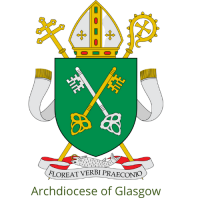The Kirkyard and Tombs
When the early Celtic missionaries to Scotland founded a new centre of Christianity, one of their first tasks was to build a rudimentary chapel and to consecrate beside it land for Christian burial. It is not beyond the bounds of possibility that the present kirkyard at the “Cill of Mahew” (Kilmahew) was blessed for such a purpose as early as the 6th century, and has been the resting place of our ancestors in the faith for up to 1500 years!


There is direct evidence that the site was in use as a burial ground from at least the 9th or 10th century. During excavation work for the restoration of the chapel, several fragments of ancient tombs were unearthed: one was carved with a characteristic Celtic interlaced design and has been identified as from that period. (This specimen can be seen in the porch, lying at the foot of the Cross of St Mahew.)
The kirkyard continued to be used as a burial ground until the early 19th century: dates from 1735 to 1808 have been identified from existing tombstones. In 1948, when the Kilmahew estate was purchased by the Archdiocese of Glasgow, the kirkyard was described as "a riot of weeds and trees and tombstones commemorating the Napiers of Kilmahew and the Buchanans of Drum.”
The gravestones which remain today are all very much weathered, but inscriptions can be deciphered on a few of them. There are three tombs bearing the name John Walker (farmers of Blairin and Blairconnell) along with members of their families, and two stones commemorating Buchanans of Drumhead. Other tombs show strange markings which are probably representations of emblems of mortality.


